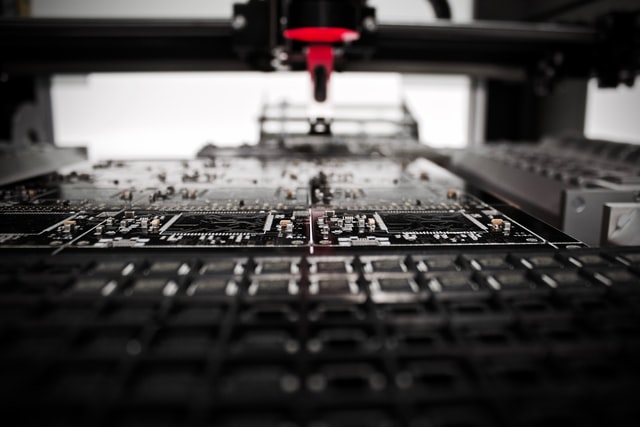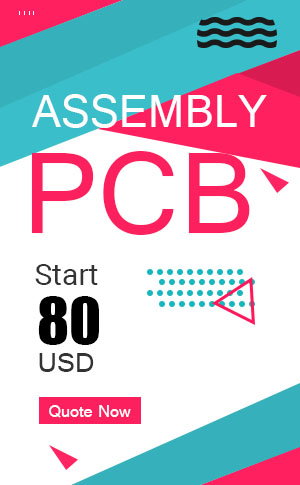General, quoting & support.
Add: Building E, No.58, Nanchang Road, Xixiang , Baoan District Shenzhen City, Guangdong, China
Tel : 0755-27348887
Fax : 0755-27349876
E-mail : svc@pcbastore.com
A Detail Guide About PCB Surface Finishes
Simon / 2021-04-10
Contents [hide]
One of the best ways to maintaining the durability and performance of your PCB board is choosing the ideal PCB surface finish. Indeed, considering the right PCB surface finish is as crucial as pondering the right manufacturer. If you are not careful in choosing the appropriate PCB finish, then you attract possible predicaments during PCB assembly and/or reliability problems. So what is this PCB surface finish?

What is the PCB Surface Finish
The PCB surface finish is an approach to safeguarding the board against some components. In simple terms, it is a strategy tailored to safeguard contact pads and soldering pads from contaminations and/or oxidations. The reason for maintaining a high level of protection is that manufacturer uses copper to foster the efficient flow of electric currents. Therefore, without the right surface finish, copper material can undergo an oxidation process, making it challenging to solder components. Alternatively, oxidation of copper material can make electrical contact pads have an awful electrical connection.
So are all PCB surface finish the best? Well, there are many surface finishes and it can be challenging to pick the right one. The reason is that all the surface finish possesses pros and cons. With that in mind, it is worth choosing the best one depending on the PCB storage, ease of assembly, design, and functionality.
7 Types of Common PCB Surface Finishes
Discussed below are types of common surface finishes alongside their drawbacks and benefits.
1. HASL
Hot Air Solder Leveling or simply HASL is a popular and cost-effective type of surface finish. The surface finish entails a process of dipping PCB board into a molten material of lead/tin and getting rid of the excess molten alloy with a hot air knife. In case you are employing large SMT elements or through-hole components, then this type of PCB surface finish can work extremely well. If you will be using a PCB board with smaller components less than SOIC 0805, then it wouldn't be a perfect choice.
Basically, the surface of the board isn't level completely, and therefore, it can attract some problems with small PCB components. Generally, the solder employed is Tin-Lead. For that reason, the surface of your board isn't in compliance with RoHS. Alternatively, if minimizing the lead amount is crucial, you would rather pick the lead-free HASL option.
For this process to be successful, some aspects must be mastered. These include welding temperature, air knife pressure, lifting speed, air knife temperature, and dip soldering time.
Pros
Considerable high storage time
Lead-free, which means it is RoHS compliance
Cost-effective
Great copper coverage and pad wetting
Mature technology
Highly ideal for electrical testing and visual inspection
Cons
Not ideal for wire bonding
Not appropriate to employ in capacitive touch switches
Molten solder leads to the natural meniscus and this causes poor planarity
HASL is not ideal, especially in thin panels because the bath produces high heat, which leads to board warping
2. OSP
Better referred to as the organic solderability preservative, OSP encompasses anti-tarnish properties that protect the PCB copper surface from contamination and/or oxidation. A thin layer of protective material is utilized and applied to the board's surface through a process called conveyorization.
Generally, the process employs water-based organic material that connects to copper and offers a layer called organometallic. This layer is vital because it safeguards the surface from soldering. In a nutshell, the layer must possess some traits such as oxidation resistance, moisture resistance, and resistance to heat shock. These traits also help to safeguard the copper material from rusting.
Pros
Simple and cost-effective
Very fine pad surface
Environmental friendly
Lead-free
Reworkable
Cons
Poor storage, lifetime, and handling
Poor wettability
Low protection
Challenging to gauge the film quality
3. Immersion Silver
The tin option and immersion silver react differently with copper. Notwithstanding, it does not get destroyed when introduced to the air. This insinuates that it requires proper storage in an anti-tarnish area. Storing in a great package means that it will allow soldering for around 6-12 months. In case you remove the board from the storage area, it must undergo solder reflow the same day. It is possible to achieve a long-lasting shelf life if you use gold plating.
Pros
Excellent immersion finish
Exceptional for smooth BGA/pitch/smaller components
Higher solderability
Lead-free
Low cost
Ideal for aluminum wire connectivity
Cons
Easily contaminated
Difficult electricity testing
Short assembly window
Demands high storage
4. Immersion Tin
Because almost every solder is tin-based, their layers can rhyme any kind of solder. What happens to the immersion tin is that after including the organic components in the solution of immersion tin, the formation of a tin layer will occur with a granular type of structure. This is vital because issues of tin migration will be solved and foster solderability and thermal stability.
The process of immersion tin can lead to a flat copper formation with an intermetallic compound. This is crucial because the overall immersion tin will boast great solderability with no flatness issues.
Pros
Great for production of the horizontal line
Ideal for smooth trace processing
Ideal for SMT
Great flatness
Cons
Challenging for electrical testing
High storage conditions
A carcinogen is involved in the process
Solder joint and other minor issues can be initiated by the Tin whiskers
5. Electrolytic Nickel
This is a surface finish that is significantly becoming popular. The reason for overwhelming love is that it can solve several main issues connected with other types of surface finish. This surface finish employs two parts. The first part includes a nickel layer employed to act as an ideal surface and as a barrier to the board's copper. The second part encompasses a gold layer employed to safeguard the nickel layer when storing the board.
Pros
Outstanding for flat board surfaces
Great for PTHs
Lead-free
It boasts a long shelf-life
Cons
Most expensive
Poor solderability
6. ENEPIG
This is also a popular surface finish and an upgrade of ENIG (Electrolytic Nickel). Unlike ENIG, ENEPIG boasts having an additional palladium layer between gold and nickel. This layer helps safeguard the nickel layer from some processes like corrosion and contamination, and this avoids the black pad that commonly happens with ENIG surface finish. Despite the layer of gold being less compared to that of ENIG, the ENEPIG finish is highly expensive.
Pros
Enjoys all the ENIG benefits without issues like black pad
No risk of corrosion
More ideal for wire connectivity than ENIG
Lead-free
Long storage time
Cons
Expensive
Complex process
Challenging to control
7. Lead-free HASL
Lead-free HASL is typically the same as the normal and/or standard HASL. However, the main difference is that it doesn't employ the Tin-lead solder. Lead-free HASL can use materials such as Tin-Nickel, Tin-Copper, or Tin-Nickel-Copper Germanium. These components are essential because they make the overall PCB board RoHS compliance and an economical option. But just like the normal HASL, lead-free HASL is also not the right one for smaller components.
If you will be using smaller components, it is advisable to try using the immersion PCB coatings. However, you must be ready to spend more because immersion coatings are slightly costly but more ideal for the task.
Pros
Cost-effective
Excellent solderability
Enable large processing of window
Foster several thermal excursions
Con
Varying topography/thickness between small and large pads
Bridging on the smooth pitch
Not ideal for pitch BGA & SMD less than 20 mil
Not suited for HDI components
Key Considerations When Choosing PCB Finish
Choosing the right PCB surface finish is not a walk in the park, especially for beginners. With many options available to choose from, the overall experience becomes daunting. Challenging in the sense that these surface finishes have unique traits and this makes the difference. Therefore, if you are looking to use the right surface finish, be sure to consider the following aspects.
RoHS compliance
The kind of surface finish you choose must be in compliance with the RoHS regulations. Essentially, the right surface finish must employ lead-free materials.
Wettability and solderability
Wettability and solderability are essential aspects of PCB manufacturing. When looking for the right surface finish, therefore, you must understand that some options such as ENEPIG and OSP influence the solderability process. Alternatively, other options like HASL are awesome for it.
Pad flatness
Mostly, some options lead to unequal surface and this affects the solderability, performance, among other processes. If flatness matter to you, just choose the options with even and thin layers. An ideal choice, in this case, can be ENEPIG, ENIG, and OSP.
Aluminum or Gold wire bonding
If you are limited to using aluminum or gold wire connectivity, then you are bound to choosing ENEPIG and ENIG.
Storage conditions
Basically, certain types of PCB surface finish are mush fragile and require careful handling. Other options are not fragile hence improve your board's durability.
Solder cycles
You also need to consider the number of times your board will be reworked and/or soldered. Ideally, several options are great for reworking. Others will be poor for reworking, especially the immersion tin.
Conclusion
Choosing the right PCB surface finish is starts by looking at the essential aspects like material cost and performance requirement. In case you want to consider the cheapest option, Tin-lead HASL can be the right one. However, you need to remember that it will not be RoHS compliant. It doesn't have to be RoHS compliant, lead-free HASL can be great. This option will be ideal only if no smooth pitch elements are available because lead-free HASL cannot be employed awesomely on the flat. In case the design demands RoHS compliance and smooth pitch elements, then a flat lead-free finish option can be exceptional, the likes of ENIG and Immersion silver.
Previous article:A 2021 Beginner Guide on PCB Routing Techniques and Tools for Success







